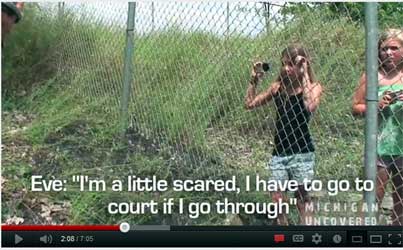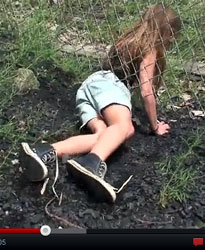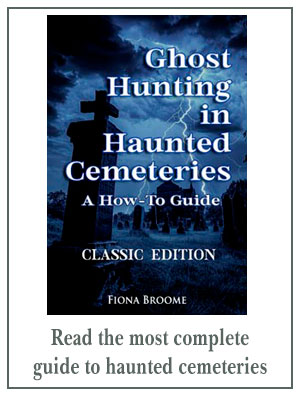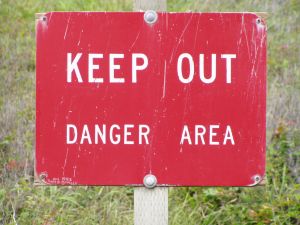 For years, many of us have warned about dangerous aspects of ghost hunting.
For years, many of us have warned about dangerous aspects of ghost hunting.
From physical safety to legal issues, and personal liabilities to spiritual protection, this field has more pitfalls than most hobbies and professions.
In general, the paranormal community can be divided into three groups:
-
- Those who know the risks and take appropriate precautions.
- Those who don’t know the risks, or have only a vague idea, and aren’t as cautious as they might be.
- Those who see the warning signs (literal and figurative) and ignore them, thinking they’re immune to the risks.
I want to be sympathetic when someone is arrested for ignoring a “no trespassing” sign, or when they go to Vale End (or a similar site) and return home, terrified… a fear that stays with them for years. I’ve warned about scams and con artists, and sleazy people who like the cover of darkness.
Experienced professionals usually know the risks and do what they can to minimize them. Event planners try to organize activities so no one is placed in unnecessary danger.
Trespassing (an illustrated rant)
A wide spectrum of ghost enthusiasts seem to be oblivious to all risks. I see that in my email inbox, with questions and tales of woe, daily.
But, the symptoms aren’t only in my incoming email. Looking for good videos to explain issues related to the haunted Eloise Insane Asylum in Michigan, I found three videos with the following content.
All were filmed by a group of kids, emulating the Ghost Hunters TV series.
First, the kids filmed the no trespassing sign. Then, they ignored it and entered the property anyway.
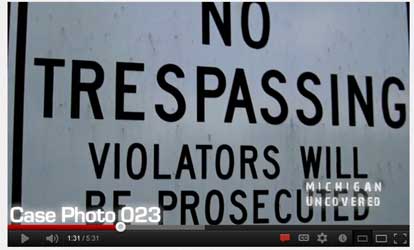
Then, they captioned portions of their videos, repeatedly proclaiming that they were on private property.
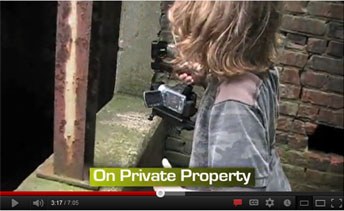
Worse, when one of the kids said she was afraid to slip under the fence because she might be arrested, her friends talked her into breaking the law.
Okay, they’re 12-year-olds, so you might ask, “Where were the parents?”
The answer…? In at least one part of the video, the mom was holding the camera.
I don’t want to single out these kids as if they’re an example of the primary problem.
They’re not.
Adults are doing this kind of thing even more often than kids are.
Laws and legal penalties aren’t the only dangers
The bigger issue is what “no trespassing” signs can indicate.
Those signs might indicate major safety problems, including some that may be life-threatening.
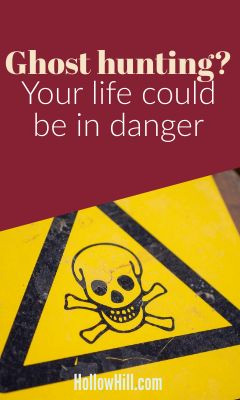 They might include something as simple (but deadly) as asbestos dust or as urgently perilous as structural damage. An issue might be toxic waste underground or a site known for harboring territorial, poisonous snakes.
They might include something as simple (but deadly) as asbestos dust or as urgently perilous as structural damage. An issue might be toxic waste underground or a site known for harboring territorial, poisonous snakes.
And, almost all abandoned structures have rodent issues. I talked about that risk in my earlier podcast about ghost hunting and respiratory risks and in my article about ghost hunting and health issues.
Here’s the reason for alarm: With “no trespassing” signs prominently displayed, many site owners and communities figure they’ve done enough. They’ll make repairs later when they have more funds to work with.
They (reasonably) assume that the signs will protect an unwary visitor from putting him- or herself at risk.
“No trespassing” signs rarely go into detail. (When I last checked, the fenced-off area near Gilson Road Cemetery in Nashua, NH, did not explain that it’s a possibly toxic Superfund site.)
But, don’t rely on “no trespassing” signs as warnings.
Sometimes, we’re called into homes and businesses (in use, not abandoned) with significant risks – structural and health issues – as we explore moldy basements and attics with rodent droppings.
Every researcher needs to be aware of the dangers, as well as precautions to take.
Very sick and troubling dangers
I’ve talked about blunders with Ouija boards and sleazy people groping team members in the dark. I’ve ranted about cult-like groups and thrill-seekers with an adrenaline addiction.
So, yes, this field can seem like a minefield to the unwary.
The key word is “unwary.” Once you’re aware of the risks, you can evaluate which you’re okay with and what limits to place on your research.
In the past, I’ve avoided describing ghost hunting dangers because… well, that’s not the focus of this website.
In the 1990s, I wanted to interest people in ghost hunting.
Now, I’m doing my best to make ghost hunting interesting and safe.
Risks need to be assessed on a site-by-site basis.
It’s one thing to go into a paved, haunted cemetery after dark, where you’ll meet dozens of joggers and dog walkers.
It’s quite another to go into an abandoned building with a wide range of structural and health concerns.
Every site presents challenges. Know the risks you’re taking, not just in general but at the specific site you’re investigating, and the people you’re trusting in dark and low-light conditions.
![]()
Learn the best ways to find ghosts, in local (and legal!) places…
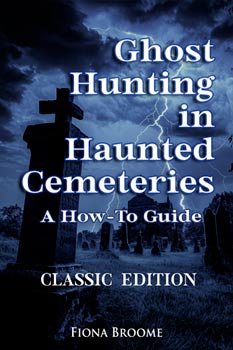 GHOST HUNTING IN HAUNTED CEMETERIES – A How-To Guide : CLASSIC EDITION
GHOST HUNTING IN HAUNTED CEMETERIES – A How-To Guide : CLASSIC EDITION
Step into the eerie realm of haunted cemeteries.
In “Ghost Hunting in Haunted Cemeteries – Classic Edition,” you’ll learn to discover haunted cemeteries near you, pinpoint the most active areas, and identify the graves most likely to hold supernatural secrets.
With step-by-step instructions and expert tips, you’ll learn how to conduct thorough investigations that reveal the true nature of haunted cemeteries and graveyards.
This is the classic guide, updated and expanded. It goes far beyond the basics. Whether you’re a seasoned ghost hunter or someone intrigued by eerie places, this book is your key to unlocking the mysteries that lie within haunted cemeteries.
Available at Amazon and other booksellers.

